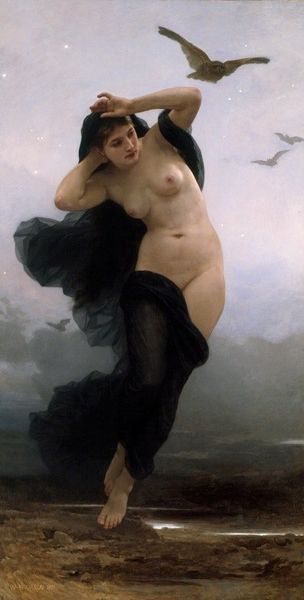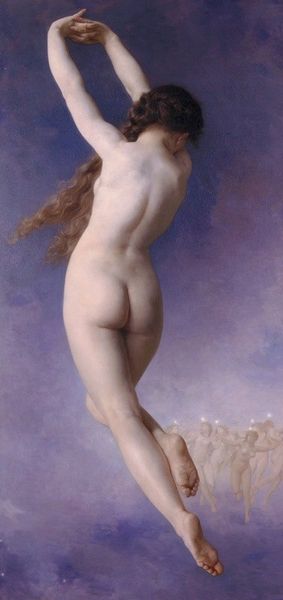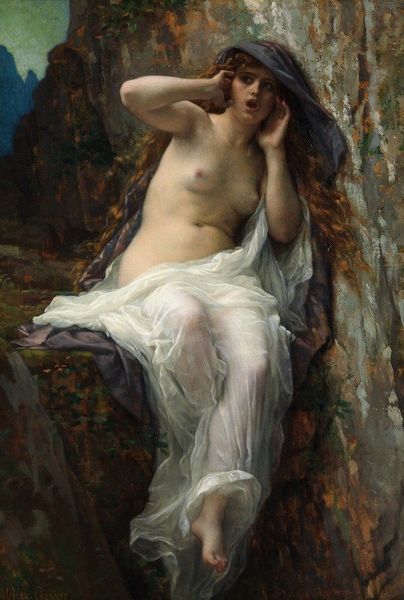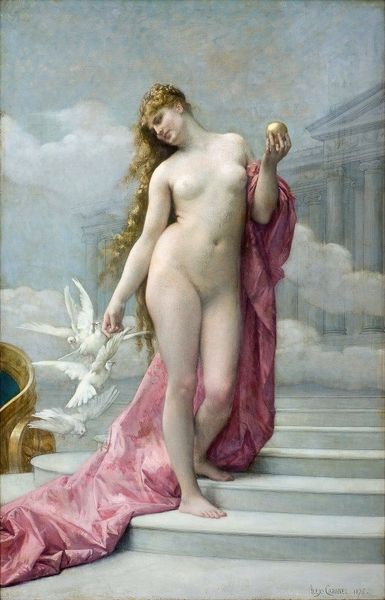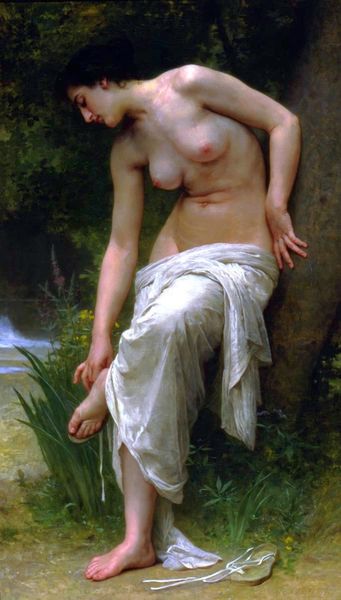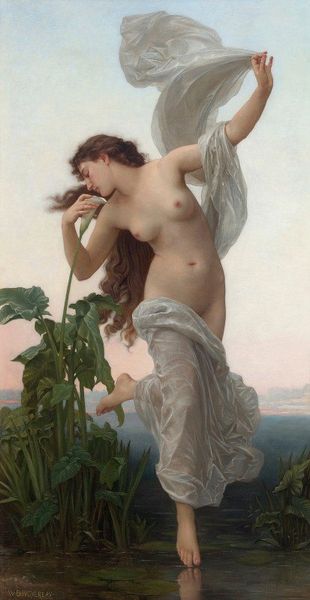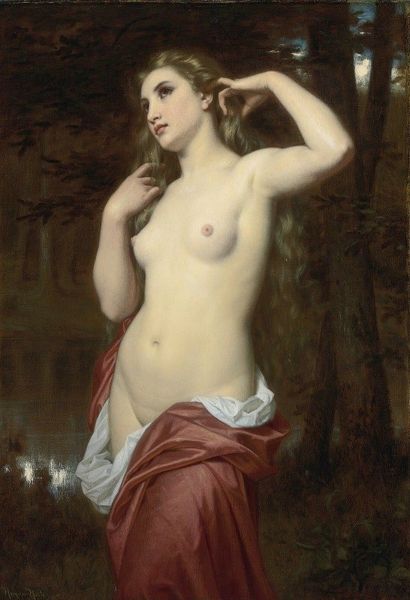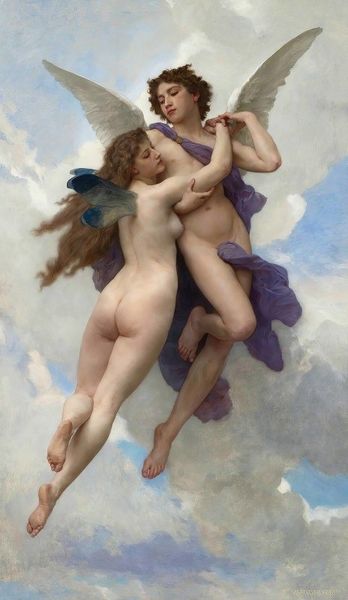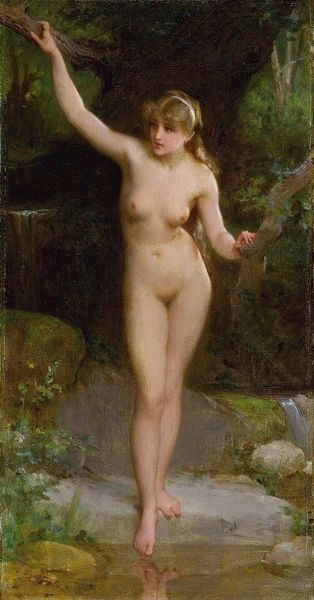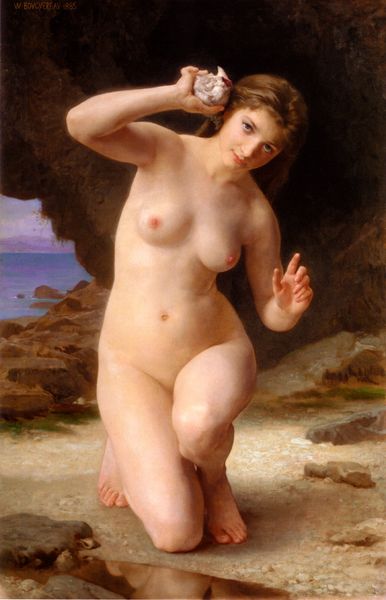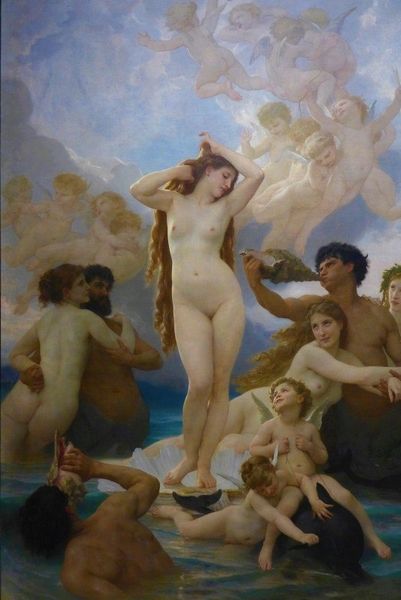
Copyright: Public Domain: Artvee
Curator: William Bouguereau's 1882 oil painting, "Evening Mood," presents a captivating depiction of a female figure emerging from the sea. Editor: There's a melancholy serenity about this. The soft color palette, the moon hanging almost apologetically in the sky... it evokes a sense of quiet resignation. Curator: Indeed. Notice how Bouguereau uses light and shadow to sculpt the figure, emphasizing the idealized form with remarkable anatomical precision. The drapery, clinging to her body, adds a layer of complex textural interplay. The smooth surface of the painting is typical of academic art, minimizing brushstrokes to achieve a polished, almost ethereal effect. Editor: That "ethereal effect," though… It positions this nude figure, and by extension the female body, within a very specific and limiting mythological framework. Is she Venus? Some other sea nymph? The work flattens female identity by cloaking it in these archetypes, thereby erasing any genuine, individual presence. Moreover, it promotes a male gaze through an uncomfortably sexualized lens. Curator: One could argue that her nudity serves as an allegorical device, symbolizing purity and connection with nature rather than mere objectification. Editor: But is this connection with nature empowering, or is it reducing her agency? Considering the period, one must reflect upon the fact that idealized female nudes functioned as objects of consumption in art, reinforcing a patriarchal system that privileged the male viewer. Bouguereau's historical paintings offered very limited representation for women in his era. Curator: Perhaps. However, examining it as an example of romanticism reveals much, from the artist's understanding of linear forms to the mastery with which the paint is layered on canvas. These were the artist's core strengths. Editor: It is impossible, I think, to look at any work outside of its era's norms and socio-historical values. That said, let's not shy away from recognizing the beauty within it as well as its social baggage. Curator: Well said. This interplay offers layers that encourage discussion. Editor: Absolutely, it helps understand visual legacies and challenge accepted narratives about beauty and representation.
Comments
No comments
Be the first to comment and join the conversation on the ultimate creative platform.

